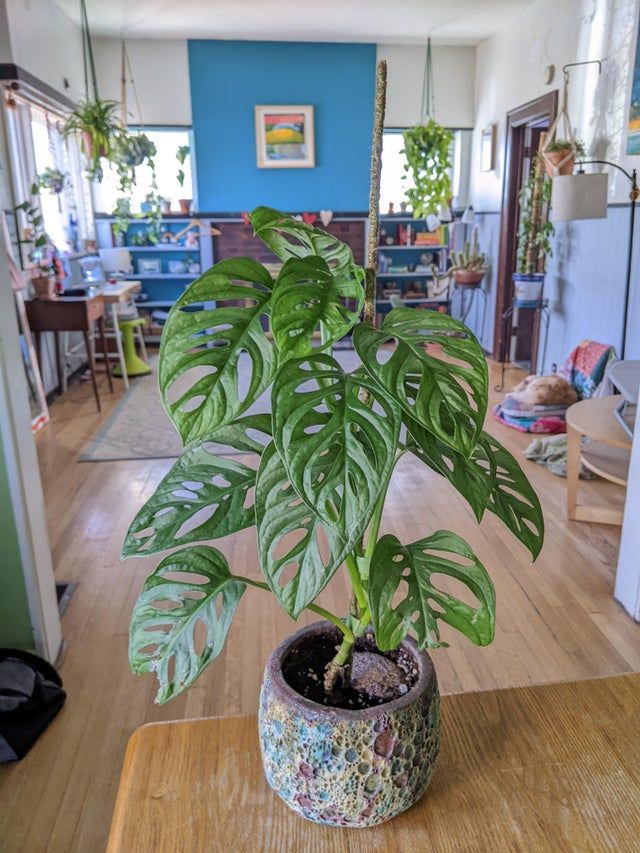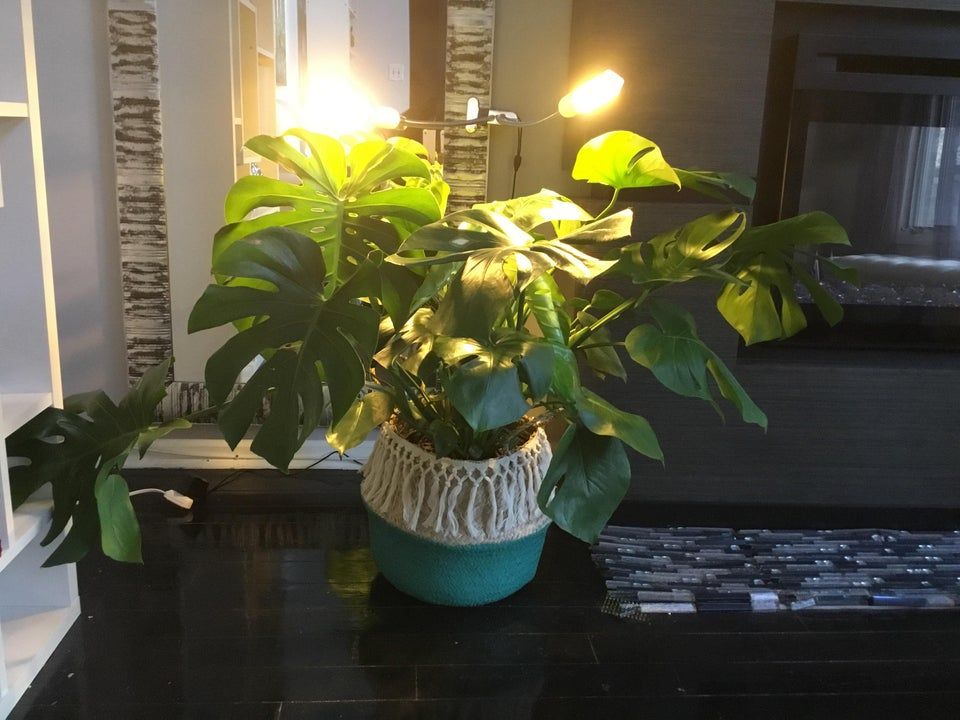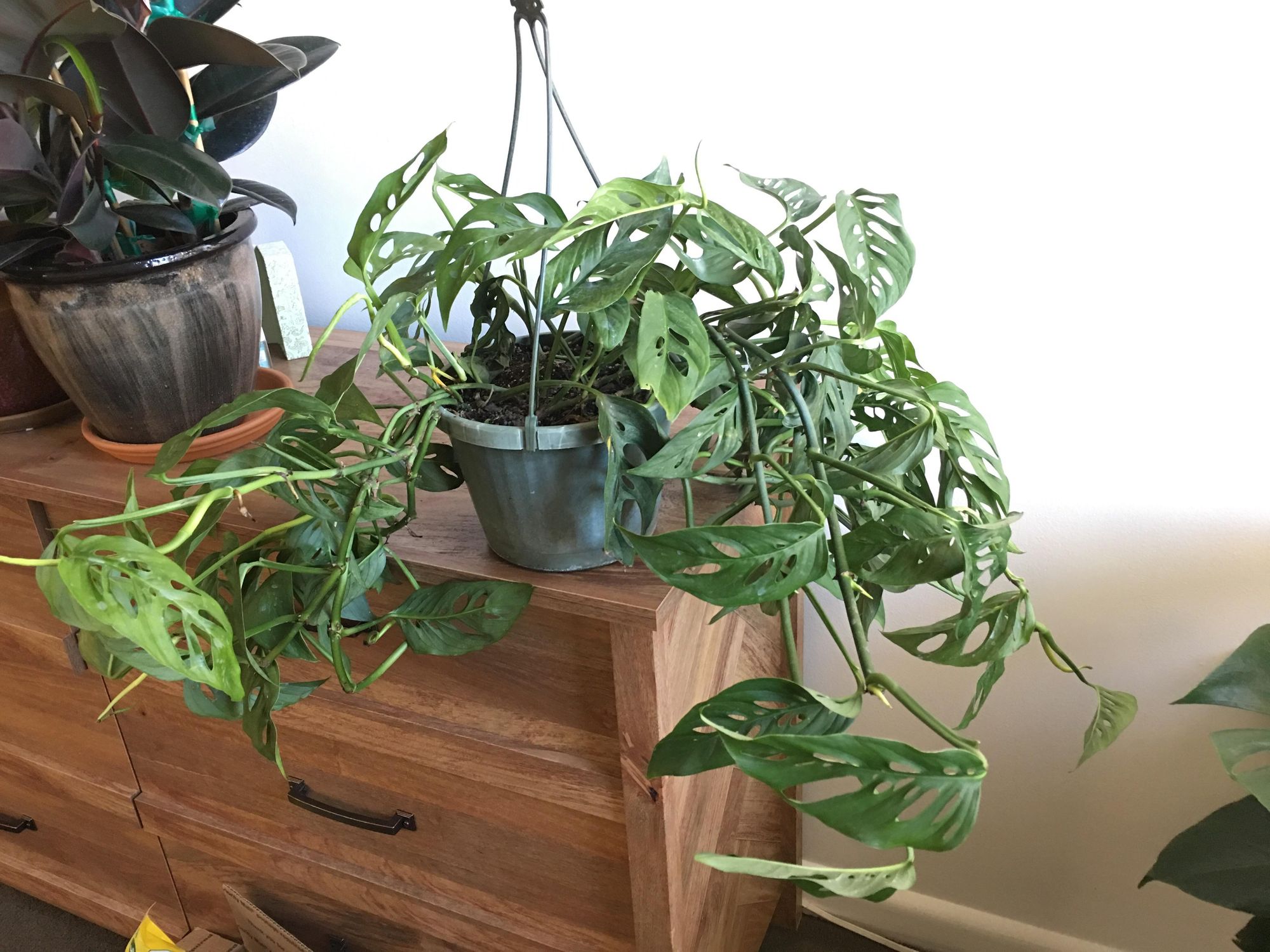How Do You Care For Monstera Adansonii

Also known as the Swiss Cheese plant, the Monstera Adansonii is known for its pointy leaves with holes in them which gives them the resemblance to swiss cheese. The Adansonii is one of 45 species of plants in the Monsteras genus. While this plant is native to the tropical region, it can be grown indoors under the right conditions.
The Adansonii is actually the smallest plant in the Monsteras genus which makes it the perfect indoor plant. It is also quite resilient and relatively easy to care for. It is a hanging plant which means you will need to create stakes or trellises on which the plant will grow. Other than this, there are no other extra special requirements to grow this plant. In this article, we will go over some of the basic requirements to grow and care for your Monstera Adansonii plant.
How Much Light Does The Monstera Adansonii Plant Need?
When it comes to growing the Monstera Adansonii indoors, you don’t need to worry about the plant getting too much light. The Adansonii plant is native to the tropical rainforests of Central America and South America. This means they live in the canopies and are adapted to survive in indirect sunlight rather than direct hot scorching sunlight. It is easy to replicate this indirect sunlight condition in your home.
Typically, the plant should not be placed in direct bright light. Instead, you can place it on a north or south-facing window. East or west-facing windows may work as well, but the plant has to be kept about 6 to 7 feet away from the window to keep it from getting damaged. Since this is a hanging plant, it is relatively easy to adjust the amount of light that it gets.

How Much Water Does My Adansonii Plant Need?
Another basic requirement for this plant is water. Since this is a tropical plant, giving the plant a balanced supply of water can be a little tricky. The best way to determine if the plant needs to be watered is to check the topsoil to see if it is wet or dry. If the top inch of the soil is dry, then you should water it. But if it is still wet, there is no need to do so.
On average, the plant should be watered once a week for optimum results. If the weather where you live is extra dry or during the dry seasons of the year, you can raise this to twice a week. The plant may also require more water if you’re placing it outside during the growing season.
One of the signs that indicate that you’re not watering your Adansonii correctly is that the leaves begin to turn yellow. This plant is a lush green houseplant and a yellowing leaf is an indication that something isn’t right. Usually, this could mean that the roots have become waterlogged and they’re not getting sufficient air. If nothing is done, the leaves will start to droop and they’ll die off eventually.
Unfortunately, it is impossible to reverse this once it starts. To correct the damage and salvage your plant, you should ease off the watering as soon as you notice the yellowing leaves. Trim off the affected leaves then inspect the roots to confirm that they’re not dead or mushy. If they’re, trim them off as well then leave the roots to air out for some hours. You can also replant in a fresh pot with new soil.
Soil Requirements
The Monstera Adansonii plants grow best in soils that have great moisture retention ability. Thus, the best type of soil to grow this plant is moss-based or coco coir potting soil. These two soil types are known for their excellent water retention ability. They will retain moisture and release it slowly to your plant, allowing the plant to grow properly without the roots becoming soggy.
It is also important that you grow the plant in a pot with proper drainage. This ensures that excess water isn’t retained in the pot. The optimal soil acidity for this plant is between PH range of about 5.5 to 7.0 which is slightly acidic to neutral.

Temperature & Humidity
Since this plant grows naturally in rainforest habitat, it needs extra high humidity to grow and thrive. Of course, you don’t want to turn your living room into a greenhouse so it might be impossible to replicate this exact condition.
Your best bet is to place the plant in a place where the conditions are as close to optimal as possible. Usually, if you have a well-lit room in your home that gets plenty of heat during the day, it should be good enough for your plant. The optimal temperature is about 60 degrees Fahrenheit or slightly higher.
Humidity is also very important for jungle plants like the Swiss-cheese plant. You should place the plant in a room with as much moisture as possible. Some of the tricks you can use to raise humidity include:
- Misting the plant regularly
- Place the plant above a pebble water tray
- Use a humidifier
- Growing plants together.

Monstera Adansonii Pests and Diseases
Regular household pests and bugs like spider mites, thrips, scale, aphids, and mealybugs affect this plant. Thrips are particularly difficult to get rid of and a systemic pest control approach may be necessary. You should inspect the plant daily to discover potential infestations. You can also use neem oil, diluted soap, or rubbing alcohol on the plant to prevent an infestation.
The most common plant disease that affects the Swiss cheese plant is the Mosaic virus. This virus affects several plant species, causing deformed foliage with a blistered appearance. Diagnosing the mosaic virus in your Adansonii plant may be a little difficult since leaf discoloration can also be caused by other pests and diseases. However, blistered or raised foliage is almost always a sure sign.
Unfortunately, once your plant develops this disease, there’s really no way to save it. You may have to get rid of it entirely or isolate the plant to keep it from affecting other plants. Some plants may continue to thrive even with a mosaic virus but they should still be kept away from other plants to prevent the virus from spreading to other plants that may be unable to survive it.
To Avoid Yellow Leaves Make sure your Monster plant is Well Drained
While Monsterras are generally easy to care for, they can be susceptible to yellowing leaves if they are not getting enough drainage. If your Monsterra's leaves are turning yellow, the first thing you should do is check the pot to make sure it has drainage holes. If it does not, water logging can occur, causing the leaves to turn yellow. You can also try adding more drainage material to the pot, such as gravel or Perlite. Monsterras prefer to be kept on the dry side, so be sure not to overwater your plant. With proper care, your Monsterra will thrive and its leaves will stay a healthy green.

Additional Tips To Keep Your Monstera Adansonii Healthy.
- Your plant should only get a maximum of 2 to 3 hours of direct sunlight per day. Usually, this should be in the morning when the rays of light are a bit duller.
- The color of the leaves could be used as an indicator to determine if the plant needs water. If the leaves are droopy, check the moisture of the soil to see if it is dry enough for you to add more water
- Swiss cheese plants need to be fertilized occasionally. However, you don’t need to do this during the winter months
- The Adansonii needs a fair amount of space to thrive. You should report the plant in a bigger pot if you notice that the roots are starting to circle in the pot. Ideally, the plant should be moved to a larger pot every year.
- Keep away from pets: the Monstera Adansonii plant is moderately toxic for pests. If you have cats or dogs that tend to chew on leaves, it is best to keep them away from the plant. Ingesting it can lead to adverse reactions like oral irritation or vomiting.
Conclusion
The Monstera Adansonii plant is relatively easy to grow indoors. The most vital requirements are adequate indirect sunlight, the right temperature, and optimal humidity. The plant also needs to be watered appropriately to prevent underdoing or overdoing it.